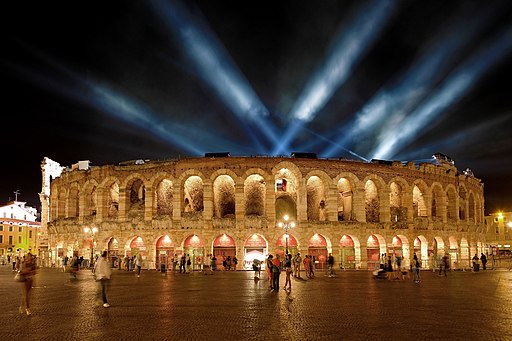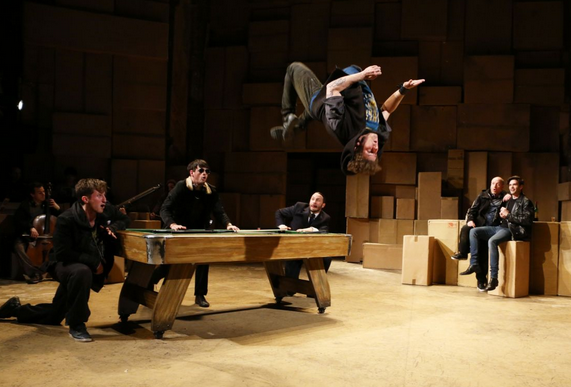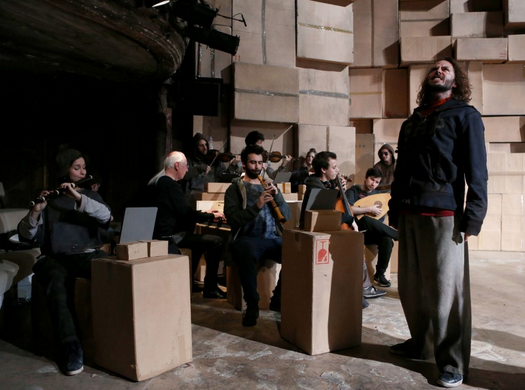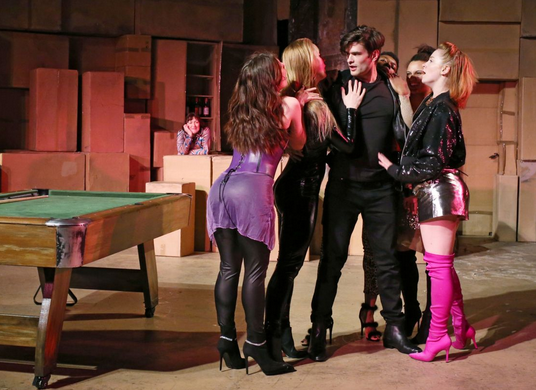
The Beggar’s Opera at the Chateau Versailles Royal Opera.
Ka-ching. No, that’s not the sound of money, or tuppence hitting the tin of a panhandler. It’s me ticking off my bucket list.
Sometimes the place is the star of the show. Think of Placido Domingo making his Italian debut at L’Opera in Verona in the summer of 1969 in a Roman colloseum that dates back to 35 AD when Tiberius was Caesar. The evening launched one of the most extraordinary tenor talents of all time, but, as you can see in the photo below, the arena itself is a legend. Incidentally, you can see Domingo on August 4, 2019 in Verona celebrating the 50-year anniversary of that debut.

And that is similar to what it feels like to see a Spectacle at the Royal Opera at Palace Versailles (or the Royal Chapel). If you’re planning a trip to Paris, then start with a look at what is on stage at Versailles, and plan your trip around that. There’s even a Grand Masked Ball coming up on June 22, 2019. While there, the time and space continuum part and you are lost in the womb of the galaxies, transfixed by the storytelling, and the history of Versailles itself, in a more meaningful way than the same event might be in any other setting.
I was lucky enough to land in Versailles during a performance of John Gay’s The Beggar’s Opera, reimagined by Ian Burton and Robert Carsen. What fun it was to see this modern take on a classic romp through the shadows of deception and corruption at all levels of society, from the street, to the penthouse, the jailhouse and the highest seat in government. From breakdancing and busking, to pickpockets and prostitution, and all the booze and drugs in between, Burton and Carsen’s The Beggar’s Opera (with an outstanding musical contribution from William Christie) is a mash-up of Old Bailey and Baroque instrumentation with modern choreography and cursing. I might complain that all of the women were strumpet and siren stereotypes swooning over, or ensnaring, some two-bit Casanova. However, all of the men were two-timing, back-stabbing thieves and knaves. There are no heroes or redemption. That’s the point of this farce – that corruption and graft run through the veins of all levels of society, including, or perhaps especially, in the halls of justice and government, where one hopes to get a fair shake of things. Everyone is asking, “What’s in it for me!”
Just when all hope is lost for the hero/anti-hero of the play, Macheath, there’s a change in government, and the pauper pickpocket is now President! How many of our current world leaders use women as toys and take every advantage to line their own pockets with gold? Just as it was in 1728 when The Beggar’s Opera became the most popular play in the 18th century, the themes of corruption and graft ring true amidst today’s steamy, sordid scandals.
Burton and Carsen’s The Beggar’s Opera is an imaginative, bawdy, risque interpretation of an irreverent classic satire of opera and humanity. The audience loved every aspect of it, wildly clapping and yelling “Bravo!” throughout the play. The staging and set design were absolutely brilliant – some of the best I’ve ever seen. A wall of boxes became a beggar’s bedroom, a pool hall, a thieves’ lair, Old Bailey, and even served as the orchestra pit. Set changes were part of the breakdancing – resourceful choreography to watch.

Having the musicians on stage as buskers in the criminal underworld helped the audience to peak into the den of musicality that is too often hidden in the orchestra pit. William Christie’s music and his ensemble were as entertaining as the main event. The musicians were a delightful splash of grey, sot and booze adding color to the street scene. The lute and harpsichord kept an earlier Baroque period echoing in our ears throughout the modernized production, keeping the spirit of John Gay on stage with the actors.

The actors, each and every one, were deliciously wicked and debauched (even the deceived and preyed-upon women). As a two-timing, two-bit criminal Casanova, Benjamin Purkiss seduced all of us, and seems destined for a much larger stage. Olivia Brereton (Lucky Lockit) had a moment of coloratura in her duet with Kate Batter (Polly Beachum) that dazzled and titillated the audience with a taste of the depth and breadth of her vocal skills and talent. But it was Beverly Klein who stole the show in her role as Diana Trapes, a weathered Madame well past her prime, who could sing like an angel and crow like an old crone – all in the same breath. Her comedic and vocal talents are on par with the great grand dames. She, like Purkiss, is primed for becoming a household name. And, of course, when stars shine that brightly, it speaks volumes to those who conceived this spectacular, modernized farce – Ian Burton, Robert Carsen and William Christie.

It was a bittersweet blessing to be watching The Beggar’s Opera, about the struggles and inequality of the most disadvantaged in society, in a palace whose owners were dethroned and beheaded by unhappy denizens. That irony was enhanced by current protests of the yellow jackets in Paris on January 16, 2019, which had most tourists (including me) avoiding the Champs-Elysees that weekend. The historic setting itself resonated the themes of poverty, injustice, greed and corruption, and how quickly the tides of politics can turn (not necessarily for the better).


